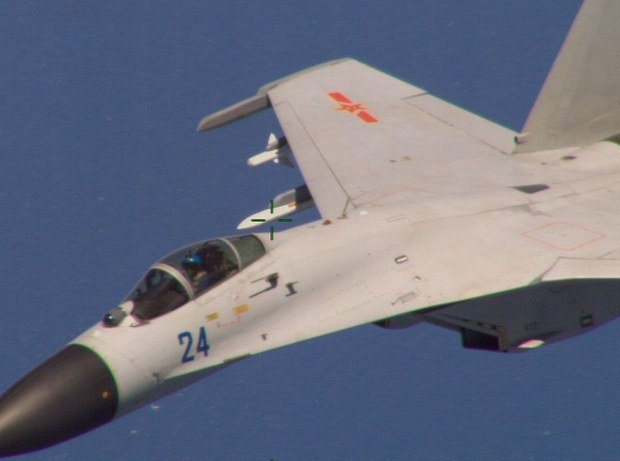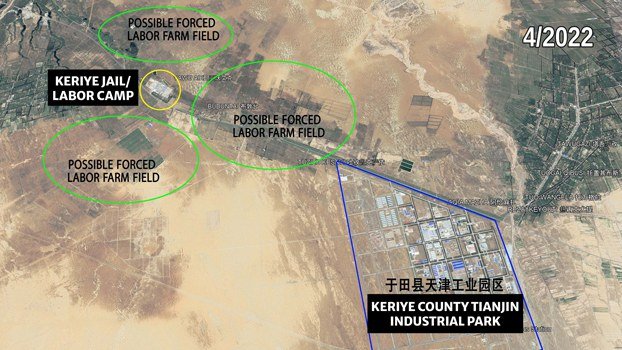US, China continue to trade accusations over ‘buzzing’ incident
The U.S. military has dismissed China’s accusation that a U.S. spy plane “engaged in dangerous maneuvers against a Chinese Navy fighter jet” over the South China Sea on Dec. 21, maintaining that it was the Chinese fighter that caused the two aircraft to nearly collide.The U.S. Indo-Pacific Command (INDOPACOM), in an original statement on Dec. 29, said that on Dec. 21, a Chinese J-11 fighter pilot performed an unsafe maneuver during an intercept of a U.S. Air Force RC-135 aircraft, forcing the RC-135 to “take evasive maneuvers to avoid a collision.”
INDOPACOM provided a video recorded by the U.S. crew.
Three days later, on Jan. 1, the PLA Southern Theater Command released its own version, also supported by a video, saying “the U.S. intentionally misled the public” and it was the U.S. RC-135 aircraft that “abruptly changed its flight attitude and forced the Chinese aircraft to the left.”
In the latest response to the RFA on Wednesday, INDOPACOM resolutely rejected the PLA version, insisting that the Chinese J-11 was responsible for the near-collision.
3 meters from the wing
“A U.S. Air Force RC-135 positively identified and observed a People’s Liberation Army Navy [PLAN] J-11 on Dec. 21 in the South China Sea,” said INDOPACOM’s Public Affairs department in Camp Smith, Hawaii, in a written reply.
It said the U.S. reconnaissance aircraft was conducting routine operations in the international airspace when “the PLAN fighter approached the RC-135 and positioned itself approximately 10 feet (3 meters) from the RC-135’s wing.”
According to INDOPACOM, the PLAN aircraft “maneuvered toward the front of the RC-135, into a position where it is unlikely the PLAN pilot could maintain a safe visual of the U.S. RC-135.”
“While the RC-135 maintained its course and speed, the PLAN fighter dangerously drifted within 20 feet (6 meters) of the RC-135’s nose, forcing the RC-135 to take evasive maneuvers to avoid collision,” the Command said.
In its version, the PLA Southern Theater Command said the U.S. plane “conducted intentional close-in reconnaissance in the vicinity of China’s southern coastline and the Xisha [Paracel] Islands” in the South China Sea, which China controls.
The spokesman, Senior Col. Tian Junli, said: “During the process, in disregard of repeated warnings from the Chinese pilot, the U.S. aircraft abruptly changed its flight attitude and forced the Chinese aircraft to the left.”
Tian said the U.S. military’s statement was “nothing but slander and speculation.”
He also accused the U.S. aircraft of violating a U.S.-China Memorandum of Understanding (MOU) on the rules of behavior for the safety of air and maritime encounters signed in 2015.
In the videos released by INDOPACOM and the Chinese military, the PLAN J-11 was seen flying within a very close range of the U.S.’s RC-135 aircraft.
The J-11 then flew ahead of the RC-135 before drifting even closer to the RC-135. The U.S. aircraft responded by dropping down.
Aerial intercepts of less than 500 feet (152 meters) are considered a violation of the 2015 MOU and Chinese aircraft are often caught doing so.
 In this Aug. 2014 file photo, a Chinese J-11 fighter jet – the type involved in the latest incident – flies near a U.S. Navy aircraft about 215 kilometers (135 miles) east of China"s Hainan Island. Credit: Reuters/U.S. Navy/Handout
In this Aug. 2014 file photo, a Chinese J-11 fighter jet – the type involved in the latest incident – flies near a U.S. Navy aircraft about 215 kilometers (135 miles) east of China"s Hainan Island. Credit: Reuters/U.S. Navy/Handout‘Buzzing’ foreign aircraft
Flying close extremely close and fast – known as “buzzing” – risks mid-air collisions.
Chinese fighter jets repeatedly “buzzed” a Canadian reconnaissance aircraft on a U.N. mission in East Asia, with over two dozen intercepts deemed dangerous, Canadian media reported in June 2022.
On these occasions the Chinese jets reportedly came as close as 20 to 100 feet (6 to 30 meters) to the Canadian plane.
There have been a number of close encounters between Chinese and foreign military aircraft in recent years.
The latest incident took place in March when U.S. Lockheed Martin F-35 fighters had at least one close contact with China’s J-20 stealth fighters over the East China Sea.
A U.S. Navy P-3C Orion surveillance aircraft and a Chinese military surveillance aircraft came within 1,000 feet (305 meters) of each other in the skies over the South China Sea in 2017.
The worst incident occurred in April 2001 when a Chinese F-8 fighter jet collided with a U.S. Navy EP-3 Aries II surveillance plane over the South China Sea, killing the Chinese pilot. The U.S. aircraft had to make an emergency landing on China’s Hainan island and its 24 crew members were detained for 11 days before being released.
[圖擷取自網路,如有疑問請私訊]
|
本篇 |
不想錯過? 請追蹤FB專頁! |
| 喜歡這篇嗎?快分享吧! |
相關文章
AsianNewsCast























